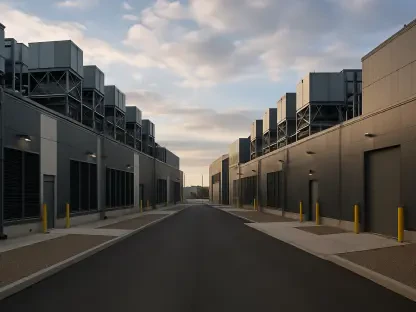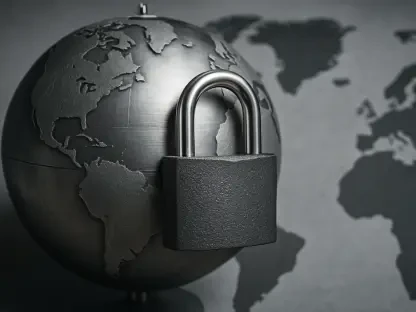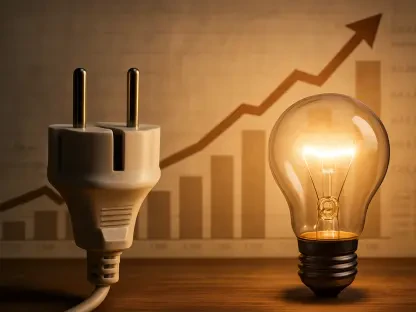Liberty Utilities (New England Natural Gas Company) Corp., operating under the name Liberty, has filed a petition with the Massachusetts Department of Public Utilities (DPU) seeking approval for its proposed Three-Year Energy Efficiency Plan covering the years 2025 through 2027. This plan forms part of a broader strategy across Massachusetts aimed at reducing greenhouse gas emissions and promoting energy efficiency. Approval of this extensive plan could have significant implications for Liberty’s customers, including potential adjustments to their utility bills. Massachusetts’ law G.L. c. 25, § 21 mandates electric and gas distribution companies to develop these energy efficiency strategies in collaboration with the Energy Efficiency Advisory Council, ensuring that all feasible energy efficiency and demand reduction resources are acquired cost-effectively.
Overview of Liberty’s Energy Efficiency Plan
Liberty’s proposed plan is meticulously designed to adhere to the stringent requirements set forth by Massachusetts law, compelling electric and gas distribution companies to enlist cost-effective or cheaper energy efficiency strategies. The Three-Year Energy Efficiency Plan features a comprehensive financial scope, projecting a total investment of approximately $50,754,006 over the designated period. The principal objective of this ambitious plan is to achieve substantial reductions in greenhouse gas emissions, aligning with environmental goals set by the Secretary of Energy and Environmental Affairs. Effectively, it is part of a statewide initiative where different program administrators anticipate a collective investment of around $5 billion, forecasted to yield a staggering $13 billion in benefits for Massachusetts customers.
The plan features distinctive programs tailored to various customer groups, including residential, low-income, and commercial and industrial (C&I) users. By targeting specific categories, Liberty’s strategy aims to maximize energy efficiency and demand reduction benefits across the spectrum of its customer base. These initiatives, designed for residential and commercial sectors alike, represent significant steps toward achieving broader environmental and economic goals. In light of this, Liberty’s energy efficiency programs are expected to contribute substantially to the statewide effort of reducing overall energy consumption and advancing decarbonization efforts.
Financial Implications for Customers
One of the most crucial aspects of Liberty’s proposed energy plan is its anticipated impact on customer utility bills. For residential heating customers (R-3) using around 122 therms monthly during peak periods, the adjusted bills could encounter a peak increment of $17.35 (7.57 percent) in 2025, followed by a decrease of $10.42 (4.23 percent) in 2026, and a subsequent increment of $3.04 (1.29 percent) in 2027. Similarly, residential low-income customers (R-4) utilizing approximately 110 therms monthly might witness an increment of $11.80 (7.53 percent) in 2025, a decrease of $7.09 (4.21 percent) in 2026, and yet another increment of $2.07 (1.28 percent) in 2027.
In exploring the impacts further, former Blackstone Gas Company residential heating customers (R-3) using 117 therms per month are projected to face an initial increase of $16.73 (9.77 percent) in 2025, a reduction of approximately $10.05 (5.34 percent) in 2026, followed by a mild increment of $2.94 (1.65 percent) in 2027. Analogously, former Blackstone Gas Company’s residential low-income heating customers (R-4) using 116 therms monthly could experience an increase of $12.40 (9.76 percent) in 2025, a notable decrease of $7.45 (5.34 percent) in 2026, and an increment of $2.17 (1.65 percent) in 2027. The financial implications for commercial and industrial customers under this plan are expected to vary depending on their unique gas consumption patterns and additional factors influencing their energy usage.
Public Hearings and Stakeholder Engagement
Public hearings have been scheduled to ensure transparency and provide opportunities for stakeholder feedback on Liberty’s proposed energy efficiency plan. These hearings will occur in multiple formats: both in-person and virtually. The in-person hearings are planned for December 3, 2024, at Worcester’s Hogan Campus Center; December 4, at New Bedford’s Keith Middle School; and another on December 5, at the Department of Public Utilities in Boston. To ensure broad accessibility, interpretation services will be available in several languages, including Spanish, Chinese (Mandarin and Cantonese), Vietnamese, Haitian Creole, Portuguese, and Russian.
In addition to in-person events, a virtual public hearing via Zoom is scheduled for December 5, 2024, at 2:00 p.m. Participants can join the hearing using a specific link, with provisions also made for those preferring audio-only access through dial-in options. Again, interpretation services will support participation in multiple languages, facilitated through the Zoom platform by selecting the “Interpretation” option within the application. These hearings are crucial for gathering comprehensive feedback and ensuring that the voices of all stakeholders are heard in the decision-making process.
Submission of Comments and Public Participation
Individuals interested in providing comments during any of these hearings are requested to email krista.hawley@mass.gov by Friday, November 29, 2024. This email should include their name and contact information. Additionally, written comments can be submitted until the close of business (5:00 p.m.) on Friday, December 6, 2024. It’s important to note that all comments will be posted publicly on the DPU’s website without redacting personal information; hence, individuals are advised to carefully consider the extent of personal details they disclose in their submissions.
The Department of Public Utilities recommends that public comments be submitted via email. However, paper copies can also be sent to Mark D. Marini, Secretary, Department of Public Utilities, at their Boston address if electronic submission isn’t feasible. This inclusive process underscores the considerable importance of stakeholder engagement in finalizing the proposed energy efficiency plan. Ensuring meaningful public participation allows the plan to meet the needs and concerns of the broader community while advancing state energy efficiency objectives.
Balancing Costs and Benefits
Liberty’s proposed energy plan is expected to significantly impact customer utility bills, particularly for residential heating customers (R-3) who use about 122 therms per month during peak times. Their bills might see an increase of $17.35 (7.57 percent) in 2025, a decrease of $10.42 (4.23 percent) in 2026, followed by a rise of $3.04 (1.29 percent) in 2027. For residential low-income customers (R-4) using around 110 therms monthly, there might be an increase of $11.80 (7.53 percent) in 2025, a decrease of $7.09 (4.21 percent) in 2026, and another rise of $2.07 (1.28 percent) in 2027.
Former Blackstone Gas Company residential heating customers (R-3) using 117 therms monthly are projected to face a rise of $16.73 (9.77 percent) in 2025, a cut of $10.05 (5.34 percent) in 2026, and a small rise of $2.94 (1.65 percent) in 2027. Similarly, former Blackstone Gas Company residential low-income heating customers (R-4) using 116 therms monthly could experience an increase of $12.40 (9.76 percent) in 2025, a notable decrease of $7.45 (5.34 percent) in 2026, and an increment of $2.17 (1.65 percent) in 2027. Commercial and industrial customer bills under this plan will vary based on their specific gas consumption and other factors affecting their energy use.









